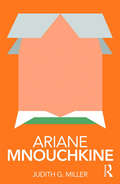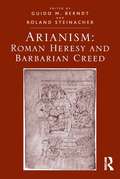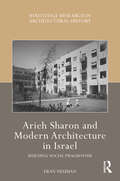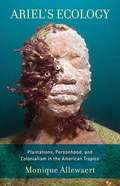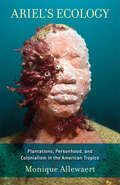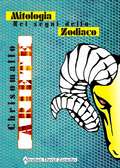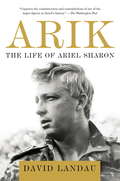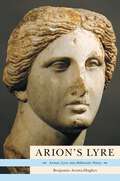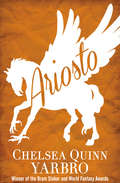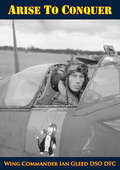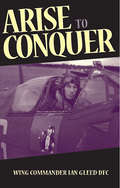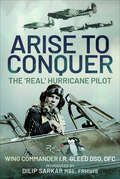- Table View
- List View
Ariadne: This summer discover the smash-hit mythical bestseller
by Jennifer Saint**The mesmerising retelling from the woman at the heart of one of Ancient Greece's most famous myths.**'I absolutely adored this book and am encouraging everyone I know to buy a copy.' ⭐ ⭐ ⭐ ⭐ ⭐ REAL READER REVIEW'The last few pages will easily become tear soaked. I loved every minute of this book' ⭐ ⭐ ⭐ ⭐ ⭐ REAL READER REVIEW'A lyrical, insightful re-telling' - Daily Mail'If you like Madeline Miller's Circe and Song of Achilles, you will eat up Ariadne [. . .] Saint makes it a page-turner' - Glamour'Exquisitely written and exceptionally moving, this is a mythical retelling to savour.' - Elodie Harper, author of THE WOLF DEN'ARIADNE gives voice to the misused Princess of Crete who betrayed her father to save Theseus from the Minotaur. Relevant and revelatory.' - StylistAriadne, Princess of Crete and daughter of the fearsome King Minos, grows up hearing stories of gods and heroes. But beneath the golden palace something else stirs, the hoofbeats and bellows echoing from the Labyrinth below. Every year its captive, the Minotaur - Ariadne's brother - demands blood.When Theseus, Prince of Athens, arrives as a sacrifice to the beast, Ariadne sees in him her chance to escape. But helping Theseus kill the monster means betraying her family and country, and Ariadne knows only too well that drawing the attention of the mercurial gods may cost her everything.In a world where women are nothing more than the pawns of powerful men, will Ariadne's decision to risk everything for love ensure her happy ending? Or will she find herself sacrificed for her lover's ambition?ARIADNE gives a voice to the forgotten women of one of the most famous Greek myths. Beautifully written and completely immersive, this exceptional debut novel is perfect for fans of CIRCE, A SONG OF ACHILLES, and THE SILENCE OF THE GIRLS.'With her wonderfully executed debut that reimagines the classic tale of Theseus, Adriane and the Minotaur, Jennifer Saint joins the likes of Madeline Miller and Pat Barker in forging mesmerising retellings of ancient Greek myths from a female perspective.' - Waterstones.com'Saint's immersive novel thrusts the reader straight into the heart of Greek mythology with this wonderful reimagining of the story of Ariadne.' - iPaper'What happens after the monster is defeated and the princess leaves with the hero? Jennifer Saint's ARIADNE is a shimmering tapestry of two sisters bound by deceit and the shadows of family history. . .With a fresh voice and keen insight, Saint adds flesh and bone to an ancient myth, drawing the reader into an uneasy world of ever-afters.' - Yangsze Choo, New York Times bestselling author of THE NIGHT TIGERWHAT THE READERS ARE SAYING...'Stunning writing, fabulous storytelling and surprisingly real characters who you could empathise with' ⭐ ⭐ ⭐ ⭐ ⭐'This is an essential book in the new and rising volume of retelling from the women's point of view - so revealing and questioning. The ending 5 pages of this book killed me.' ⭐ ⭐ ⭐ ⭐ ⭐'So real, so matter of fact, like a good chat on a girls' night out.' ⭐ ⭐ ⭐ ⭐ ⭐
Ariana: A Novel
by Edward StewartThe rarefied realm of opera comes alive in the story of a diva torn between passion and ambitionShe is Kavalaris—the most magnificent singer ever to grace the international operatic stage. Her talent is the stuff of legend and has made the men around her rich. Mark Rutherford first saw her when he was a young boy—and he cannot forget her. It will be almost two decades—separated by a depression and a world war—before they meet again and fall deeply in love.Beginning in 1928 and continuing for almost six decades, Ariana tells the story of a performer whose extraordinary gift touches everyone who hears her. But who is the woman behind the phenomenon? As Ariana bestows her gift on other singers, she ensures her immortality. It will come at a great cost to her own life. Because ambition—and the kind of success most people only dream of—always exacts a price.
Ariane Mnouchkine (Routledge Performance Practitioners)
by Judith MillerOver the last forty years, French director Ariane Mnouchkine and her theater collective, Le Théâtre du Soleil, have devised a form of research and creation that is both engaged with contemporary history and committed to reinvigorating theater by focusing on the actor. Now revised and reissued, this volume combines: ● an overview of Mnouchkine’s life, work and theatrical influences ● an exploration of her key ideas on theater and the creative process ● analysis of key productions, including her early and groundbreaking environmental political piece, 1789, and the later Asian-inspired play penned by Hélène Cixous, Drums on the Dam. ● practical exercises, including tips on mask work. As a first step toward critical understanding, and as an initial exploration before going on to further, primary research, Routledge Performance Practitioners offer unbeatable value for today’s student.
Arianism: Roman Heresy And Barbarian Creed
by Guido M. BerndtThis is the first volume to attempt a comprehensive overview of the evolution of the 'Arian' churches in the Roman world of Late Antiquity and their political importance in the late Roman kingdoms of the 5th-6th centuries, ruled by barbarian warrior elites. Bringing together researchers from the disciplines of theology, history and archaeology, and providing an extensive bibliography, it constitutes a breakthrough in a field largely neglected in historical studies. A polemical term coined by the Orthodox Church (the side that prevailed in the Trinitarian disputes of the 4th century C.E.) for its opponents in theology as well as in ecclesiastical politics, Arianism has often been seen as too complicated to understand outside the group of theological specialists dealing with it and has therefore sometimes been ignored in historical studies. The studies here offer an introduction to the subject, grounded in the historical context, then examine the adoption of Arian Christianity among the Gothic contingents of the Roman army, and its subsequent diffusion in the barbarian kingdoms of the late Roman world.
Arieh Sharon and Modern Architecture in Israel: Building Social Pragmatism (Routledge Research in Architectural History)
by Eran NeumanArieh Sharon and Modern Architecture in Israel: Building Social Pragmatism offers the first comprehensive survey of the work of Arieh Sharon and analyzes and discusses his designs and plans in relation to the emergence of the State of Israel. A graduate of the Bauhaus, Sharon worked for a few years at the office of Hannes Mayer before returning to Mandatory Palestine. There, he established his office which was occupied in its first years in planning kibbutzim and residential buildings in Tel Aviv. After the establishment of the State of Israel in 1948, Arieh Sharon became the director and chief architect of the National Planning Department, where he was asked to devise the young country’s first national masterplan. Known as the Sharon Plan, it was instrumental in shaping the development of the new nation. During the 1950s and 1960s, Sharon designed many of Israel’s institutions, including hospitals and buildings on university campuses. This book presents Sharon’s exceptionally wide range of work and examines his perception of architecture in both socialist and pragmatist terms. It also explores Sharon’s modernist approach to architecture and his subsequent shift to Brutalist architecture, when he partnered with Benjamin Idelson in the 1950s and when his son, Eldar Sharon, joined the office in 1964. Thus, the book contributes a missing chapter in the historiography of Israeli architecture in particular and of modern architecture overall. This book will be of interest to researchers in architecture, modern architecture, Israel studies, Middle Eastern studies and migration of knowledge.
Ariel Sharon
by Uri DanIn 1954 reporter Uri Dan met a young military commander named Ariel Sharon and followed him closely for more than half a century. Dan became Sharon's trusted advisor and a witness to the defining moments of the Israeli-Palestinian conflict--from secret meetings with heads of state to open warfare in the Sinai. This riveting combination of political history, narrative biography, interviews, and correspondence sheds new light on the conflict in the Middle East and provides an intimate, definitive portrait of Ariel Sharon--a man whose life is inextricably intertwined with Israel's destiny. With Hamas governing Palestine, Ariel Sharon gravely ill and the party he founded, the Kadima, in control of the Knesset, this book couldn't be more timely.
Ariel's Ecology: Plantations, Personhood, and Colonialism in the American Tropics
by Monique AllewaertWhat happens if we abandon the assumption that a person is a discrete, world-making agent who acts on and creates place? This, Monique Allewaert contends, is precisely what occurred on eighteenth-century American plantations, where labor practices and ecological particularities threatened the literal and conceptual boundaries that separated persons from the natural world. Integrating political philosophy and ecocriticism with literary analysis, Ariel's Ecology explores the forms of personhood that developed out of New World plantations, from Georgia and Florida through Jamaica to Haiti and extending into colonial metropoles such as Philadelphia. Allewaert's examination of the writings of naturalists, novelists, and poets; the oral stories of Africans in the diaspora; and Afro-American fetish artifacts shows that persons in American plantation spaces were pulled into a web of environmental stresses, ranging from humidity to the demand for sugar. This in turn gave rise to modes of personhood explicitly attuned to human beings' interrelation with nonhuman forces in a process we might call ecological. Certainly the possibility that colonial life revokes human agency haunts works from Shakespeare's Tempest and Montesquieu's Spirit of the Laws to Spivak's theories of subalternity. In Allewaert's interpretation, the transformation of colonial subjectivity into ecological personhood is not a nightmare; it is, rather, a mode of existence until now only glimmering in Che Guevara's dictum that postcolonial resistance is synonymous with "perfect knowledge of the ground. "
Ariel's Ecology: Plantations, Personhood, and Colonialism in the American Tropics
by Monique AllewaertWhat happens if we abandon the assumption that a person is a discrete, world-making agent who acts on and creates place? This, Monique Allewaert contends, is precisely what occurred on eighteenth-century American plantations, where labor practices and ecological particularities threatened the literal and conceptual boundaries that separated persons from the natural world.Integrating political philosophy and ecocriticism with literary analysis, Ariel&’s Ecology explores the forms of personhood that developed out of New World plantations, from Georgia and Florida through Jamaica to Haiti and extending into colonial metropoles such as Philadelphia. Allewaert&’s examination of the writings of naturalists, novelists, and poets; the oral stories of Africans in the diaspora; and Afro-American fetish artifacts shows that persons in American plantation spaces were pulled into a web of environmental stresses, ranging from humidity to the demand for sugar. This in turn gave rise to modes of personhood explicitly attuned to human beings&’ interrelation with nonhuman forces in a process we might call ecological.Certainly the possibility that colonial life revokes human agency haunts works from Shakespeare&’s Tempest and Montesquieu&’s Spirit of the Laws to Spivak&’s theories of subalternity. In Allewaert&’s interpretation, the transformation of colonial subjectivity into ecological personhood is not a nightmare; it is, rather, a mode of existence until now only glimmering in Che Guevara&’s dictum that postcolonial resistance is synonymous with &“perfect knowledge of the ground.&”
Ariete: Crisomallo (Mitologia nei segni dello zodiaco #1)
by Abrahan David Zaracho A.L’origine mitologica della costellazione dell’Ariete ha un protagonista particolare: Crisomallo. Figlio di un dio, avventuriero, nobile e sincero. L’ariete dotato di lana d’oro fu amico sincero e fedele di Ermes e Apollo, protettore e consigliere di un’emblematico re greco. Ammirato come divinità e, in seguito alla sua morte, la sua pelle si convertì in un prezioso artefatto reclamato tanto da Ares come sua armatura preferita quanto dagli uomini. Crisomallo fu un potente personaggio tragico, protagonista della storia degli eroi antichi. La sua storia è il preludio alla più grande avventura degli antichi eroi greci. Il vello d’oro prima di essere un inerte trofeo fu Crisomallo, un ariete dorato amante delle storie, avventure, competizioni e sopratutto dei suoi amici e alleati.
Arik
by David LandauFrom the former editor in chief of Haaretz, the first in-depth comprehensive biography of Ariel Sharon, the most important Israeli political and military leader of the last forty years.The life of Ariel Sharon spans much of modern Israel's history: A commander in the Israeli Army from its inception in 1948, Sharon participated in the 1948 War of Independence, and played decisive roles in the 1956 Suez War and the six day War of 1967, and most dramatically is largely credited with the shift in the outcome of the Yom Kippur War of 1973. After returning from the army in 1982, Sharon became a political leader and served in numerous governments, most prominently as the defense minister during the 1983 Lebanon War in which he bore "personal responsibility" according to the Kahan Commission for massacres of Palestinian civilians by Lebanese militia, and he championed the construction of Israeli settlements in the West Bank and Gaza. But as prime minister he performed a dramatic reversal: orchestrating Israel's unilateral disengagement from the Gaza Strip. Landau brilliantly chronicles and analyzes his surprising about-face. Sharon suffered a stroke in January 2006 and remains in a persistent vegetative state. Considered by many to be Israel's greatest military leader and political statesman, this biography recounts his life and shows how this leadership transformed Israel, and how Sharon's views were shaped by the changing nature of Israeli society.
Aringnar Anna
by N. ChokkanA biography of C.N. Annadurai, popularly called "Aringnar Anna" (means scholar elder brother in Tamil). An orator and an acclaimed writer in the Tamil language, he founded Dravida Munnetra Kazhagam (DMK) to become the first non-congress Chief Minister of the South Indian State of Tamilnadu in 1967.
Arion's Lyre: Archaic Lyric into Hellenistic Poetry
by Benjamin Acosta-HughesArion's Lyre examines how Hellenistic poetic culture adapted, reinterpreted, and transformed Archaic Greek lyric through a complex process of textual, cultural, and creative reception. Looking at the ways in which the poetry of Sappho, Alcaeus, Ibycus, Anacreon, and Simonides was preserved, edited, and read by Hellenistic scholars and poets, the book shows that Archaic poets often look very different in the new social, cultural, and political setting of Hellenistic Alexandria. For example, the Alexandrian Sappho evolves from the singer of Archaic Lesbos but has distinct associations and contexts, from Ptolemaic politics and Macedonian queens to the new phenomenon of the poetry book and an Alexandrian scholarship intent on preservation and codification. A study of Hellenistic poetic culture and an interpretation of some of the Archaic poets it so lovingly preserved, Arion's Lyre is also an examination of how one poetic culture reads another--and how modern readings of ancient poetry are filtered and shaped by earlier readings.
Ariosto
by Chelsea Quinn YarbroIn an alternate-world Italian Renaissance where the Italian states have formed a federation, the great epic poet Ludovico Ariosto is writing a fantasy adventure set in the New World that reflects the difficulties besetting his patron, Damiano de' Medici. While the Cerrochi in Ariosto's fantasy battle the evil wizard Anatrecacciatore with the help of a heroic version of Ariosto himself, politics and skullduggery plague the Florence-based court of Italia Federata, in which Ariosto becomes enmeshed when he chooses to support the Medicis against those seeking to fracture the Italian union.
Ariosto in the Machine Age (Toronto Italian Studies)
by Alessandro GiammeiAriosto in the Machine Age reveals how the most influential poet of the Renaissance was conjured or appropriated to shape Magical Realism, avant-garde painting, Fascist cultural propaganda, and cinema in modern Italy between the birth of Futurism and the end of the Second World War. Based on substantial archival findings, bold iconographic hypotheses, and novel interpretations of literary texts, the book proposes a new account of Italy’s twentieth-century culture through a unique take on Ludovico Ariosto’s early modern poetics and legacy. Starting from the unexpected passéism of Futurists visiting Ferrara on the eve of the First World War, it rereads the development of Giorgio de Chirico’s Metaphysical art and Massimo Bontempelli’s Realismo Magico. The book reconstructs the multimedia archive of the Fascist initiatives for the 1933 centennial anniversary of Ariosto’s death, and then focuses on the passage between Fascist cinema and the birth of neorealism, unearthing unfinished adaptations of the Orlando Furioso by Luchino Visconti and Alessandro Blasetti. Questioning the very concept of reception, this radically interdisciplinary book warns twenty-first-century readers about the risks of monumentalizing the "great authors" of the past.
Arise Africa, Roar China: Black and Chinese Citizens of the World in the Twentieth Century (The John Hope Franklin Series in African American History and Culture)
by Yunxiang GaoThis book explores the close relationships between three of the most famous twentieth-century African Americans, W. E. B. Du Bois, Paul Robeson, and Langston Hughes, and their little-known Chinese allies during World War II and the Cold War—journalist, musician, and Christian activist Liu Liangmo, and Sino-Caribbean dancer-choreographer Sylvia Si-lan Chen. Charting a new path in the study of Sino-American relations, Gao Yunxiang foregrounds African Americans, combining the study of Black internationalism and the experiences of Chinese Americans with a transpacific narrative and an understanding of the global remaking of China's modern popular culture and politics. Gao reveals earlier and more widespread interactions between Chinese and African American leftists than accounts of the familiar alliance between the Black radicals and the Maoist Chinese would have us believe. The book's multilingual approach draws from massive yet rarely used archival streams in China and in Chinatowns and elsewhere in the United States. These materials allow Gao to retell the well-known stories of Du Bois, Robeson, and Hughes alongside the sagas of Liu and Chen in a work that will transform and redefine Afro-Asia studies.
Arise To Conquer [Illustrated Edition]
by Wing Commander Ian Gleed DSO DFCIncludes the Aerial Warfare In Europe During World War II illustrations pack with over 200 maps, plans, and photos.When historians ultimately write of the Battle of Britain they must turn for firsthand accounts to the men who fought off the Nazi air onslaught upon the heart of the British Empire. If the pitifully small number of British fighter squadrons had faltered, the outcome of the entire war might have been decided for the tragic worse in 1941. Who were the pilots who carried this burden? What manner of young men were they? What were their day-by-day and hour-by-hour duties and motives and feelings?Wing-Commander Ian Gleed, a young man in his early twenties, was one of the tiny band of flyers upon whom the responsibility for turning back the airborne invasion fell. His story is only incidentally one of heroism; it is far more a simple narrative of duty assumed and done with youthful enthusiasm and unconscious idealism.
Arise to Conquer
by Ian GleedA Royal Air Force fighter pilot&’s action-packed memoir of his service before, during, and after the epic World War II battle. Originally published during the war in 1942, this is the other side of the mirror from the philosophical flight record of authors such as Antoine de Saint Exupery. It is a literal, daily record of an English fighter pilot of 23 years fighting in the Battle of Britain, giving a truly authentic picture of life on a squadron in those times. Gleed details his first sortie in 1939, his breakdown not so long after, his return to the RAF and battles over France, his exploits in the Battle of Britain, becoming an ace, downing Messerschmitts, and eventually being awarded the DFC for his service as leader and fighter.Praise for Arise to Conquer&“An epic of the Battle of Britain.&” —The Sphere (UK)&“An excellent account of the daily life of a fighter squadron in the Battle of Britain… gives spirited descriptions of many air combats.&” —Flight
Arise to Conquer: The 'Real' Hurricane Pilot
by I.R. GleedBorn in 1916, after learning to fly as a civilian, Ian Richard Gleed was granted a RAF commission in 1936. He completed training on Christmas Day that year, being posted to 46 Squadron which was equipped with the Gloster Gauntlet. Through much of his RAF service the diminutive Gleed was known as ‘Widge’, short for ‘Wizard Midget’ on account of his excessive use of the word ‘wizard’ to describe something ‘topper’, and his short stature. Rising from Flight to Squadron Commander in short order, and later taking over the Ibsley Spitfire Wing in 1941, Gleed was enormously popular with his peers. Indeed, Wing Commander ‘Bunny’ Currant once described Gleed as a ‘pocket-sized man with care for others and courage beyond compare’. Having been decorated with the coveted ‘double’ of both DSO and DFC, Wing Commander Gleed went out to lead a wing in Tunisia. It was there that he was shot down and killed on 16 April 1943. By this time, he had achieved the status of being a fighter Ace, having been credited with the destruction of thirteen enemy aircraft. The previous year, Gleed’s wartime memoir, Arise to Conquer, was published by Victor Gollancz. Eloquently written and detailed, this book is a superb first-hand account of one man’s life and times as a fighter pilot – mainly flying the Hawker Hurricane – during the Fall of France, the Battle of Britain and beyond into the night Blitz. Reprinted here in its entirety, and extensively introduced by the renowned aviation historian Dilip Sarkar MBE, FRHistS, this edition of Arise to Conquer is supported by a remarkable set of wartime images. Among Gleed’s Hurricane pilots on 87 Squadron during the Battle of Britain and beyond was Sergeant Laurence ‘Rubber’ Thorogood, a keen photographer who is often mentioned in this book. Along with his Commanding Officer’s words, Rubber’s unique personal photograph album, containing as it does a number of images of Gleed, provides a rare glimpse of a fighter squadron at war during our Darkest – yet Finest – Hour.
Arise!: Global Radicalism in the Era of the Mexican Revolution (American Crossroads #66)
by Christina HeathertonAn international history of radical movements and their convergences during the Mexican Revolution The Mexican Revolution was a global event that catalyzed international radicals in unexpected sites and struggles. Tracing the paths of figures like Black American artist Elizabeth Catlett, Indian anti-colonial activist M.N. Roy, Mexican revolutionary leader Ricardo Flores Magón, Okinawan migrant organizer Paul Shinsei Kōchi, and Soviet feminist Alexandra Kollontai, Arise! reveals how activists around the world found inspiration and solidarity in revolutionary Mexico. From art collectives and farm worker strikes to prison "universities," Arise! reconstructs how this era's radical organizers found new ways to fight global capitalism. Drawing on prison records, surveillance data, memoirs, oral histories, visual art, and a rich trove of untapped sources, Christina Heatherton considers how disparate revolutionary traditions merged in unanticipated alliances. From her unique vantage point, she charts the remarkable impact of the Mexican Revolution as radicals in this critical era forged an anti-racist internationalism from below.
Aristide: Warlord of the Resistance
by David NicolsonThis is the story of Roger Landes - "Aristide" of F Section, Special Operations Executive - who was born in Paris of British parents and came to London in 1938, to work in the LCC's Architects Department. After being trained as a wireless operator in the Royal Signals, he was recruited into SOE, where he trained with figures such as Claude de Baissac and Harry Pueleve. Although jinxed in his attempts to parachute into France, including being "shot down" by an owl, he eventually became wireless operator in Bordeaux for the "Scientist" circuit. Just as he took over command of the circuit, he was betrayed and forced to flee, and later returned to find only one contact alive and in place. By D-Day he commanded over 5000 armed, trained resisters who disrupted transport in the region by destroying 438 locomotives and numerous power-lines. By the Liberation, he commanded more than 7000 men and had organized the peaceful transition to French government in South-West France. Ordered out of the country by de Gaulle, Landes had a spell in hospital before being parachuted into Malaya to train the population to resist the Japanese, and was there at the surrender in August 1945. Following de Gaulle's resignation he was highly decorated by the French Government, and in 1992 was made an Officer of the Legion d'Honneur. He also holds the MC and Bar, and the Croix de Guerre.
Aristo of Ceos: Text, Translation, and Discussion (Rutgers University Studies in Classical Humanities)
by William W. Fortenbaugh Stephen A. WhiteVolume 13 in the RUSCH series continues work already begun on the School of Aristotle. Volume 9 featured Demetrius of Phalerum, Volume 10, Dicaearchus of Messana, Volume 11, Eudemus of Rhodes, and Volume 12, both Lyco of Troas and Hieronymus of Rhodes. Now Volume 13 turns our attention to Aristo of Iulis on Ceos, who was active in the last quarter of the third century BCE. Almost certainly he was Lyco's successor as head of the Peripatetic School. In antiquity, Aristo was confused with the like-named Stoic philosopher from Chios, so that several works were claimed for both philosophers. Among these disputed works, those with Peripatetic antecedents, like Exhortations and Erotic Dissertations, are plausibly assigned to Aristo of Ceos. Other works attributed to the Peripatetic are Lyco (presumably a biography of Aristo's predecessor), On Old Age, and Relieving Arrogance.Whether part of the last-named work or a separate treatise, Aristo's descriptions of persons exhibiting inconsiderateness, self-will, and other unattractive traits relate closely to the Characters of Theophrastus. In addition, Aristo wrote biographies of Heraclitus, Socrates, and Epicurus. We may be sure that he did the same for the leaders of the Peripatos, whose wills he seems to have preserved within the biographies.The volume gives pride of place to Peter Stork's new edition of the fragments of Aristo of Ceos. The edition includes a translation on facing pages. There are also notes on the Greek and Latin texts (an apparatus criticus) and substantive notes that accompany the translation. This edition will replace that of Fritz Wehrli, which was made over half a century ago and published without translation.
Aristocracy, Antiquity and History: Classicism in Political Thought
by Andreas KinnegingThis brilliant critique of the literature on modernity challenges conventional approaches in two fundamental ways: First, the lineage of the modern turns out to be less ancient and glorious than is usually suggested. Modernity is an upstart rather than a scion of an old and celebrated line. The roots of modernity are held to be less secure than previously thought. This leads the author to suggest that the demise of the old is a matter of rhetoric rather than reality. The old was driven underground rather than extinguished. The inherited traditions are deeply embedded in our souls. We turn to modernity as a half-baked worldview to overcome our estrangement from the past.Kinneging examines this sweeping view in the concrete circumstances of the imagined fall of the aristocracy and rise of the enterprising bourgeoisie. But aristocracy, this study reveals a strong and thriving noblesse, not only in places like Russia and Prussia, but also in advanced capitalist states like France and England. Aristocracy, Antiquity, and History shows conclusively that the actual demise of this exploration into the sources of Western thought takes seriously the strength of an aristocratic vision that lives on in a variety of conservative and liberal doctrines.In Aristocracy, Antiquity and History the readers is reacquainted with the democratic potential as in the work of Montesquieu, and the way in which classicism, romanticism, and modernism, far from a sequential set of events, are entwined in the ethic of honor and in the moral order of modern life. In trying to understand modernity, advanced societies cannot help but draw attention to the old by way of contrast. The presence of antiquity, however suppressed or shrugged off, does not disappear, but stays with us in the very act of rebellion against the ancients. This fine work in the history of ideas will serve to redefine and redirect researches in social and political theory for years to come.
Aristocratic Education and the Making of the American Republic
by Mark BoonshoftFollowing the American Revolution, it was a cliche that the new republic's future depended on widespread, informed citizenship. However, instead of immediately creating the common schools--accessible, elementary education--that seemed necessary to create such a citizenry, the Federalists in power founded one of the most ubiquitous but forgotten institutions of early American life: academies, privately run but state-chartered secondary schools that offered European-style education primarily for elites. By 1800, academies had become the most widely incorporated institutions besides churches and transportation projects in nearly every state.In this book, Mark Boonshoft shows how many Americans saw the academy as a caricature of aristocratic European education and how their political reaction against the academy led to a first era of school reform in the United States, helping transform education from a tool of elite privilege into a key component of self-government. And yet the very anti-aristocratic critique that propelled democratic education was conspicuously silent on the persistence of racial and gender inequality in public schooling. By tracing the history of academies in the revolutionary era, Boonshoft offers a new understanding of political power and the origins of public education and segregation in the United States.
Aristocratic Liberalism: The Social and Political Thought of Jacob Burckhardt, John Stuart Mill, and Alexis De Tocqueville
by Alan Kahan"Liberalism" is widely used to describe a variety of social and political ideas, but has been an especially difficult concept for historians and political scientists to define. Burckhardt, Mill, and Tocqueville define one type of liberal thought. They share an aristocratic liberalism marked by distaste for the masses and the middle class, opposition to the commercial spirit, fear and contempt of mediocrity, and suspicion of the centralized state. Their fears are combined with an elevated ideal of human personality, an ideal which affirms modernity. All see their ideals threatened in the immediate future, and all hope to save European civilization from barbarism and militarism through some form of education, although all grow more pessimistic towards the end of their lives.Aristocratic Liberalism ignores the national boundaries that so often confine the history of political thought, and uses the perspective thus gained to establish a pan-European type of political thought. Going beyond Burckhardt, Mill, and Tocqueville, Aristocratic Liberalism argues for new ways of looking at nineteenth-century liberalism. It corrects many prevalent misconceptions about liberalism, and suggests new paths for arriving at a better understanding of the leading form of nineteenth-century political thought. The new Afterword by the author presents a novel description of liberal political language as the "discourse of capacity," and suggests that this kind of language is the common denominator of all forms of European liberalism in the nineteenth century. Aristocratic Liberalism will be valuable to students of history, political science, sociology, and political philosophy.
Aristocratic Society in Ancient Crete (Routledge Revivals)
by R. F. WillettsAristocratic Society in Ancient Crete, first published in 1955, investigates the emergence and progress of Dorian society on Crete from the 8th century BC onwards. The major contribution of Cretan culture in this period was in the field of law – law and order are traditionally linked, and Dorian Crete remained steadfast in its pursuit of order. The author offers an explanation for the protracted aristocratic character of Cretan society, basing his study on the crucial Code of Gortyna. The primitive foundations of the social system are examined, illuminating the tribal institutions which formed the basis of the aristocratic states which developed. The four classes of the Cretan states, and the mutual relations of these classes, are defined, and the stages whereby family institutions developed are analysed. Finally, political and judicial organisation is scrutinised, and the Cretan culture is situated in the wider horizon of Mediterranean civilisation.


